Major breakthroughs demanded in projects
The National Assembly Economic Committee last week urged the government to devise more solutions to quicken disbursement and implementation of national-level infrastructure projects.
“All difficulties and bottlenecks in site clearance and supply of sand and land materials for making foundations must be resolutely removed,” the committee stressed.
Under a resolution issued a few years ago, national-level infrastructure schemes include Long Thanh International Airport; the eastern portion of the North-South Expressway; ring road 4 for the Hanoi region and ring road 3 in Ho Chi Minh City; and phase 1 of expressways at Khanh Hoa-Buon Ma Thuot, Bien Hoa-Vung Tau, and Chau Doc-Can Tho-Soc Trang.
Investment for these ventures has been determined by the NA in a bid to boost the implementation of one of the three major breakthroughs of the 2021-2030 SocioEconomic Development Strategy on infrastructure development. “We know that the government is making great efforts in directing ministries and localities to actively implement the projects,” said NA deputy Hoang Quoc Khanh, representing the northern province of Lai Chau. “However, besides results achieved, many have been delayed in implementation.”
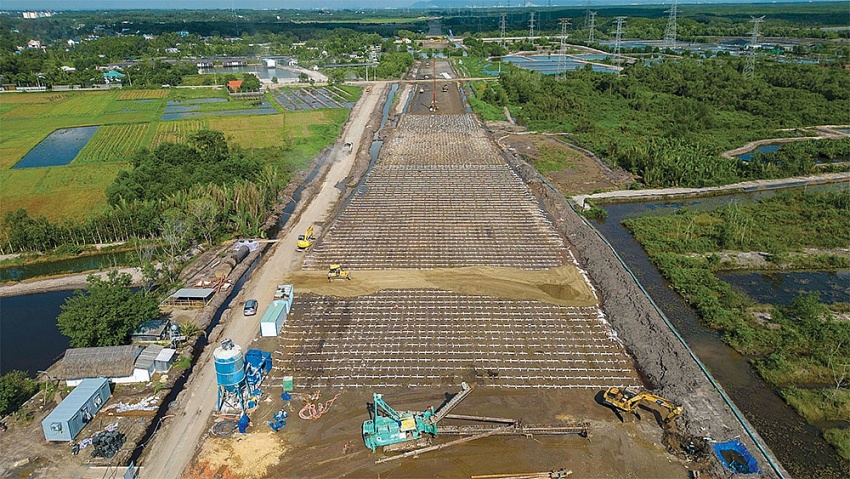 |
| Expressways, airports, bridges, and other infrastructure require a boost of pace, photo Le Toan |
Slow progress
Khanh told the NA last week that many initiatives have had to increase capital due to a rise in site clearance.
For example, initial calculations indicated that the capital for the Bien Hoa-Vung Tau expressway will ascend by $153.3 million, and the capital for the Chau Doc-Can Tho-Soc Trang expressway will also follow suit, by $5.1 million.
Notably, the capital to build the Hanoi region’s ring road 4 will climb by about $179.2 million, reaching around $3.6 billion. The project, beginning construction in 2022, runs through the capital as well as the provinces of Bac Ninh and Hung Yen. The NA set a 2026 completion target, and for it to be put into use the following year.
Hanoi People’s Committee earlier in May offered solutions to removing difficulties for component 3 of this project, deemed the most important, which has total capital of up to $2.34 billion. The committee is now appraising the bidding invitation dossier to select an investor, with the component slated for construction to begin in Q4.
“Never have I seen large projects that enjoy as many favourable policies and mechanisms as they are doing now, but many of them are still delayed due to chronic reasons such as site clearance, contractor selection, and lack of building materials,” Khanh said. “The longer they are delayed, the more investment capital will need to be raised, causing losses for the state budget.”
NA deputy Tran Anh Tuan, representing Ho Chi Minh City, ascribed the poor progress to bidding procedures.
“The procedures for bidding and selection of contractors now is applied to all types of projects without taking into account the scale of them,” Tuan said. “They must be designed and implemented depending on the scale of each. Any small-scale project must be subject to simpler procedures, making it more favourable to put them into use as soon as possible.”
According to the Asian Development Bank (ADB), projects sometimes require design or budget changes even after approval and budget allocation. This can cause long interruptions before work can start. One major obstacle to timely and quality preparation is the complexity of regulations, particularly land use planning, land acquisition, and site clearance.
“This rigidity is a crucial challenge in situations of market fluctuations. Soaring prices due to shortages of materials and inputs for production, driven by regulatory constraints, lead to higher costs, forcing contract renegotiations or the need for additional funding and approvals,” the ADB commented.
The Ministry of Finance reported that in the first four months of 2024, total public investment hit $4.83 billion, hitting 17.46 per cent of the plan assigned by the prime minister.
Last year, public investment was considered the key driver for economic recovery and growth in 2023. The government was committed to disbursing around $30 billion in the year. However, it has been reported that the disbursed sum touched $24.16 billion.
Nguyen Chi Dung Minister of Planning and Investment In the coming time, we will promote projects that have not yet completed procedures to quickly and urgently do so. Currently, there are eight that have not completed this, and 35 that have not been implemented and are still mainly focused on health or digital transformation. For projects that have completed procedures, we will focus on speeding up progress from site clearance to construction to soon put them into effective operation. I want to highlight our lessons learned. Firstly, our support methods may need to be reviewed. In some countries, the public get immediate support in cash, with each person getting $1,500-2,000. This helps the money be poured directly into the economy, stimulating consumption and production. Meanwhile, in Vietnam, our approach is often through policies which require guiding documents, then monitoring and other processes – a very time-consuming and ineffective model. When the support is completed, it may not truly be necessary. Secondly, if we keep the timing of the programme, we should not have included large projects. If we do, we must extend the implementation time, otherwise procedures will not be completed and implementation will become infeasible. Our policies must be easy to unify, monitor, and implement. That is a crucial principle. The improvement of institutions must be synchronous and unified, not a myriad of problems as we are seeing now. At present, we are getting stuck with overlapped rules, making it difficult to complete some ventures. |
Improvements needed
The government has determined that public investment will be the key driver for economic recovery and growth in 2024, when Vietnam will use $27.37 billion for this, most of which will be for infrastructure development, and efforts must be made to disburse at least 95 per cent of the sum.
Paulo Medas, mission chief for Vietnam at the International Monetary Fund, told VIR that public investment can play a key role in supporting Vietnam’s development goals and promoting the green transition.
“Funding in infrastructure, such as roads and reliable energy, is critical to support the private sector and sustain high economic growth. The transition to a greener economy will also require both public and private investment, including by developing infrastructure that could help scale up renewable energy production and alleviate current transmission bottlenecks,” Medas said.
Jonathan Pincus, senior international economist at the United Nations Development Programme in Vietnam, also told VIR that while progress has been made accelerating the pace of public investment spending, the quality of public investment remains a concern.
“In the absence of a national system of feasibility assessment and ex-post project evaluation, we cannot estimate the contribution of public investment to economic growth, improvements in living standards or access to essential services,” Pincus said.
According to him, provinces have an incentive to favour small projects that can be completed quickly so they can reach their expenditure targets. The implementation of larger projects of national and regional importance are held up by negotiations between the various local and national agencies involved and weak coordination among provinces.
Increased public spending efficiency could have a major impact on aggregate productivity growth and GDP levels. Policy research suggests that one percentage point increase in public investment via efficiency improvements can raise growth rates by 0.1-0.2 percentage points over the next few years.
At present, according to international organisations, Vietnam’s infrastructure quality lags that of many Asian countries and could impact its attractiveness as a foreign investment destination and potential growth in the long term.
The Global Quality Infrastructure Index 2023 ranked Vietnam 52nd out of 185 economies, far below Indonesia (27th), Thailand (28th), Singapore (29th), and Malaysia (33rd).
One example of infrastructure quality is the expressway density, which is one of the lowest in the region, while road transport costs are the highest regionally. The infrastructure investment gap will constrain Vietnam’s ability to attract and retain overseas funding, including those looking to relocate from China.
Vietnam currently has 47 seaports of all sizes across provinces, but 95 per cent of cargo goes through three ports funded and operated by the Ministry of Transport, in Haiphong in the north and Ho Chi Minh City and Ba Ria-Vung Tau province in the south.
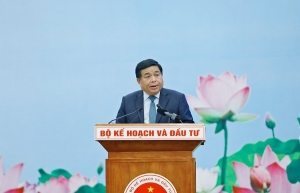 | Minister pledges public investment disbursement push The Ministry of Planning and Investment (MPI) is determined to expedite the disbursement of public investment funds this year, while eliminating inefficiencies in investment allocation, with the goal of exceeding the 65.1 per cent disbursement rate of 2023. |
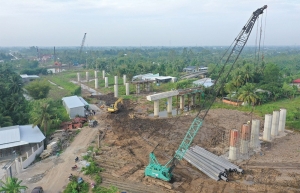 | Targets set high for disbursement The government has made drastic directions to accelerate public investment disbursement, with construction of numerous transport infrastructure projects to be implemented around the clock. |
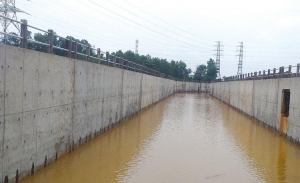 | MARD seeks to disburse public investment The Ministry of Agriculture and Rural Development (MARD) is eager to implement further solutions that can accelerate the disbursement of public investment capital. |
What the stars mean:
★ Poor ★ ★ Promising ★★★ Good ★★★★ Very good ★★★★★ Exceptional
Related Contents
Latest News
More News
- Government moves to establish International Financial Centre (December 21, 2025 | 21:00)
- Vietnam's IFC to target global investment flows (December 21, 2025 | 18:00)
- Two national hospitals expand capacity with new facilities (December 20, 2025 | 09:00)
- Ha Tinh breaks ground on major Vingroup industrial and energy projects (December 19, 2025 | 18:24)
- EVN launches major power infrastructure projects nationwide (December 19, 2025 | 18:17)
- VAL inaugurates second production line to meet domestic animal feed demand (December 19, 2025 | 16:37)
- Sun Group pioneers urban tram system in Phu Quoc (December 19, 2025 | 15:00)
- Seven major projects launched to drive Hanoi’s next growth phase (December 19, 2025 | 14:00)
- Securing capital and efficiency for Vietnam’s 2026-2030 growth ambitions (December 17, 2025 | 10:00)
- Vietnam bucking trend in the global M&A landscape (December 16, 2025 | 14:20)

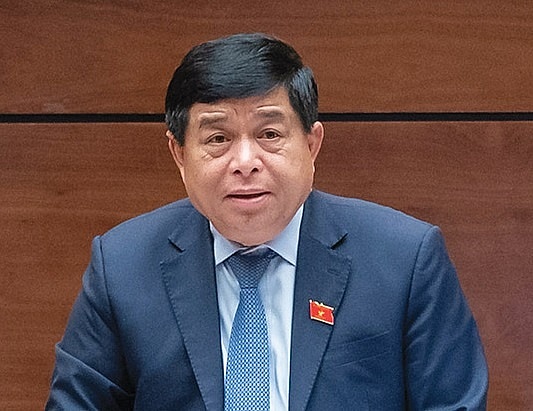
 Tag:
Tag:




















 Mobile Version
Mobile Version